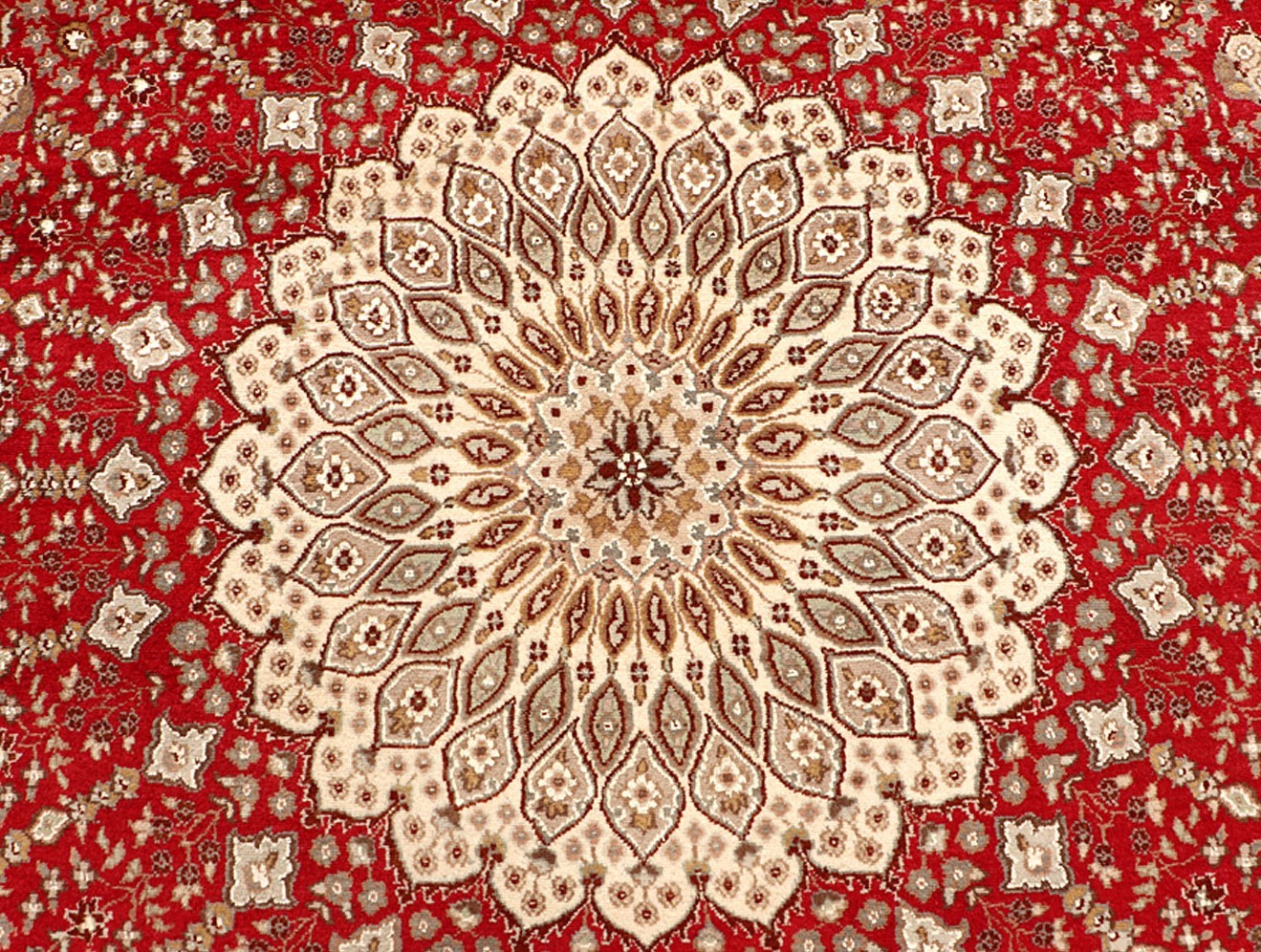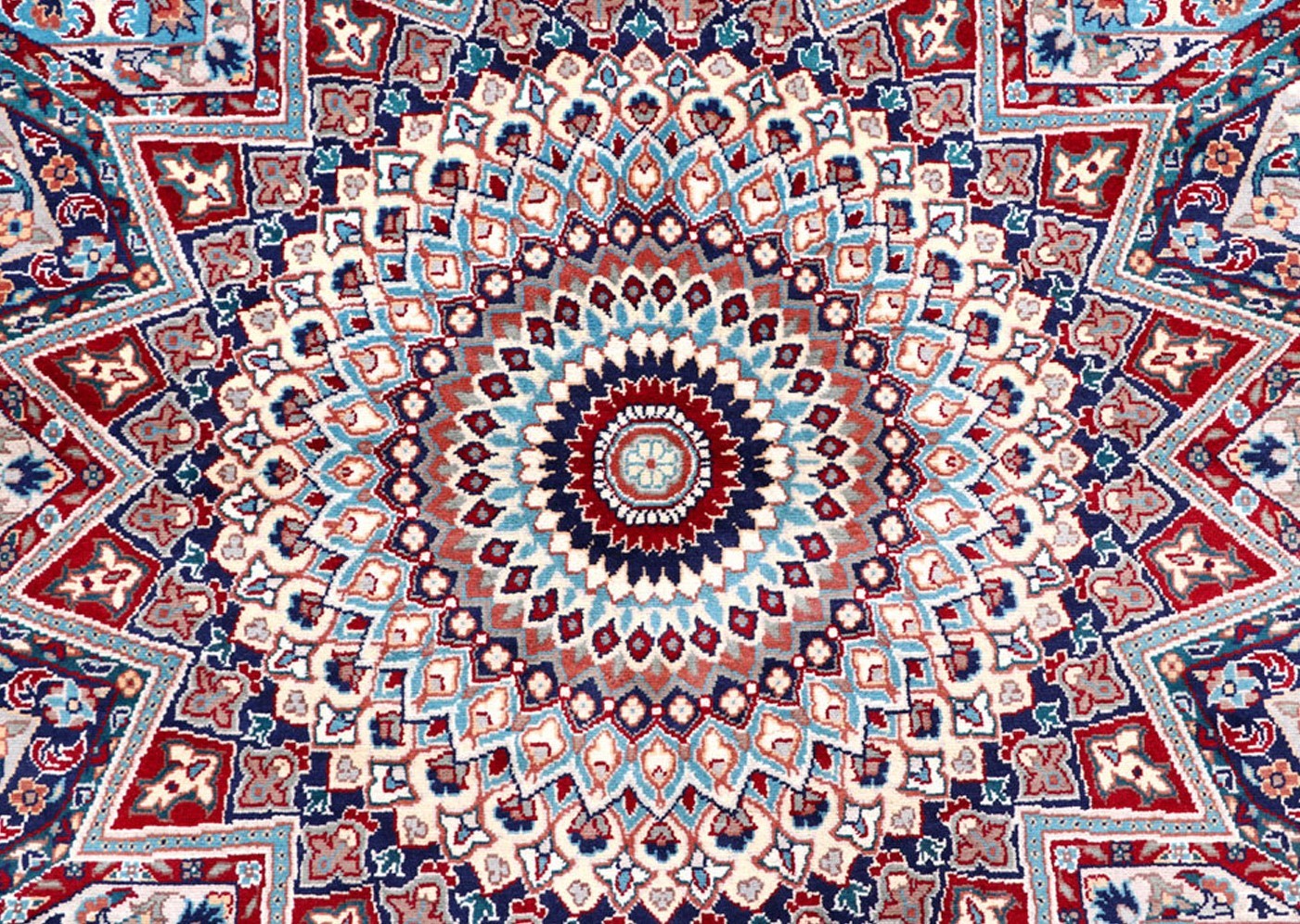Handmade carpets and rugs are a significant part of the Muslim culture and are crafted mostly in Islamic countries. The major regions responsible for the production of handmade rugs are Northern Africa, Central Asia, and the Middle East.
Hence, most Oriental handmade rugs feature design patterns that include Islamic symbols and motifs, such as the popular Gombud rugs.

About Islamic Rugs and Carpets
You must have seen many Oriental rugs that were made by Muslim weavers from Islamic countries, such as the magnificent Persian rugs and Turkish carpets.
These rugs are famous around the globe for various reasons, including their alluring design patterns and a majestic appeal. With their charming aura, Islamic rugs have won the hearts of many over the years, and continue to do so.
For centuries, Muslim communities and tribes have manufactured handmade rugs to be used for various reasons, including utilitarian purposes and for decorating their homes. In addition to this, prayer rugs are a specific type of handmade rugs that are used by Muslims during their five-time prayers every day.
In the Islamic world, rugs have also inspired legends and have a sense of mysticism attached to them owing to the stories such as those of flying carpets.
History of Rug Weaving in the Islamic World
There is little to no archeological evidence of rug weaving from the time before the religion of Islam began spreading around the globe. This shows that Muslims were one of the very first people to indulge in the art of carpet weaving, and they did it so beautifully that many ancient antique rugs have managed to stay in a good shape for centuries.
One of the oldest proofs of rug weaving by Muslim artists was discovered in a tomb located in the Siberian mountains. This piece of rug is said to be quite well-preserved and its date of creation is said to be as old as 6th or 5th century BCE.
Various other fragments of Islamic rugs, such as the Gombud rugs, have been discovered by art historians on the Silk route that runs through the Central Asia.
Apart from this, fragments of ancient Muslim carpets have been found in Cairo, dating back to 9th Century.
However, it wasn’t before 14th Century when these Islamic rugs began capturing the attention of Europeans. It is said that Marco Polo was responsible for introducing the magnificent Oriental rugs in the European market after his trip to Persia (today’s Iran).
After their introduction to the European world, it wasn’t late before these exotic handmade rugs were being used for decorative purposes in the European courts and in the homes of aristocrats, just as they were used by the Ottoman and Mughal emperors.
However, one major use of Islamic rugs, such as the handmade Gombud rugs, is only common in the Muslim regions – as floor coverings in mosques.
Hence the design patterns of many Oriental rugs crafted by Muslim weavers includes motifs and symbols that were important in Islamic beliefs, such as the mihrab. Similarly, the Gombud rugs feature a design that resembles the inside of a mosque’s painted ceiling.
Muslim artists were popular for painting the ceilings of mosques with intricate and mesmerizing geometric patterns. The paintings often included a wide range of colors and geometric shapes, such as circles, diamonds, hexagons, and straight lines. The popular handmade Gombud rugs that are easily available for sale online have designs inspired by such Muslim art and architecture. For example, have a look at this Gombud rug:

The most amazing fact about handmade Gombud rugs as well as other Oreintal rugs is that each rug has a different design pattern.
You may not believe this, but all Oriental rugs are different from one another, and we’re not talking about the different types. In other words, two Oriental rugs that are of the same type, such as Khal Mohammadi rugs, would not have the same design pattern. Which means, to craft a rug, artists create a new design every time using the same motifs and symbols that have been used since centuries in the Islamic art.
The Popularity of Islamic Rugs
There is a wide range of rugs that are crafted by Muslim weavers from Central Asia, the Middle East, and North Africa.
These Oriental rugs come in various styles, design patterns, colors, types, sizes, and shapes. They also use different materials, including wool, cotton, silk, and even goat and camel hair.
Owing to their rich design patterns and mesmerizingly captivating looks, the Oriental rugs crafted under the Ottoman and Mughal Empires attracted attention of tradesmen from the Western Hemisphere.
As a result, the demand of Islamic rugs increased in markets around the globe. Although the development of machinery and introduction of machine-rugs affected the production of handmade rugs, the handmade floorcoverings are still highly sought-after.
Today, many Islamic rugs are crafted in the similar pattern and by using the same weaving techniques that were used by artisans centuries ago. And this is another feature that makes rugs such as handmade Gombud rugs highly valuable.
An interesting fact about handmade Oriental rugs that you might not know is that the value of these art pieces increases as they age. In other world, antique rugs are oftentimes more expensive than newly crafted handmade rugs, and can also be harder to find if you’re not looking at the right handmade rug collection online.
Anyhow, if you’re interested in buying an Islamic rug or an Oriental carpet for your home, we’d tell you to check out the different types of and styles before making an investment. But, if you’re confused, Gombud rugs can always be a great purchase – one that you’ll never regret!













